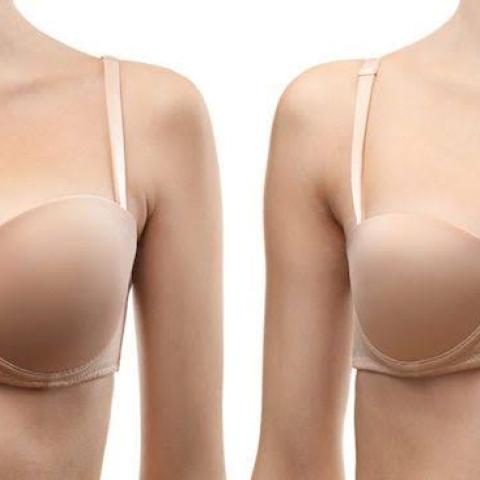Body Aesthetics | Breast Augmentation Procedure

BREAST AUGMENTATION PROCEDURE
Overview
Breast augmentation, often combined with a breast lift, is a highly individualized procedure, which you should do for yourself, not to fulfill anyone else’s desires or to fit a certain type of ideal image. It is the most commonly performed cosmetic surgical procedure throughout the World.
WHAT TO EXPECT
How is breast augmentation performed?
Usually performed under general anesthesia, incisions are made in inconspicuous areas of the breast to minimize visible scarring. There are a variety of incisions used to perform the procedure:
- In the lower crease of the breast (inframammary incision)
- Around the lower portion of the areola, or dark-colored skin around the nipple (periareolar incision)
- In the armpit (transaxillary incision)
- Under the breast fold (sub-mammary incision)
- Through these incisions, the plastic surgeon creates a pocket to place the implant. To maximize the accuracy of future mammograms, implants are generally placed under the muscle (subpectorally).
- Some breast enlargements can be performed in a minimally invasive manner using endoscopes and small incisions made in the armpit, with the major benefit being less scarring for the patient. The procedure, which takes about two hours, is typically performed on an outpatient basis.
Are there different options for breast augmentation?
Breast implants are made up of a silicone shell – we are using the brand Mentor – filled with either saline (a salt water solution) or silicone gel. Silicone gel has a thick, sticky fluid consistency that closely mimics human fat, offering a more ‘natural’ look and feel if capsule contracture (shrinking and tightening of the scar tissue around a breast implant) does not occur. Saline implants have the disadvantage of sometimes feeling like a water balloon to touch, especially in patients with thin, soft tissue.
HOW TO PREPARE
Am I a candidate for breast augmentation?
If you aren’t satisfied with the shape, size or contour of your breasts, you may wish to consider breast augmentation. Also known as augmentation mammoplasty, the procedure involves using implants to enlarge the breasts.
Breast augmentation may also help after pregnancy or weight loss if you are unhappy with the size or droopiness of your breasts. Implants can also correct asymmetry or unevenness in breast size caused by developmental problems or breast cancer surgery performed in the opposite breast.
One or more of the following feelings or conditions may indicate that you are a good candidate for breast augmentation:
- You are worried by the feeling that your breasts are too small
- Clothes that fit well around your hips are often too large at the bustline
- You feel self-conscious wearing a swimsuit or form-fitting top
- Your breasts have become smaller and lost their firmness after childbirth
- Weight loss has changed the size and shape of your breasts
- One of your breasts is noticeably smaller than the other
How do I prepare for breast augmentation?
If you are a smoker, you will be asked to stop smoking well in advance of surgery. You should avoid aspirin and certain anti-inflammatory drugs that can cause increased bleeding for a period of time before surgery. Your plastic surgeon will provide you with additional preoperative instructions.
Breast enlargement is performed with either saline or silicone implants that are placed either under the chest muscle (sub pectoral) or over the chest muscle (sub glandular).
RESULTS
What results can I expect?
Breast augmentation will make your breasts fuller and enhance their shape. Like many women who have had the procedure, you may have a boost in self-confidence. Generally, the results of breast enlargement surgery are long-lasting. Augmentation mammoplasty cannot, however, stop the natural effects of aging that eventually alters the size and shape of virtually every woman’s breasts. Long-term follow-up with your plastic surgeon is strongly recommended. View our breast augmentation before and after photos to see results from actual patients.
What is involved in recovery?
Breast enlargement surgery is usually performed as an outpatient procedure. If this is the case, be certain to plan for someone to drive you home after surgery and stay with you at least the first night following surgery.
You will be given medication to take at home. Stiffness and soreness in the chest for the first two to five days is normal. These side effects, along with some swelling and bruising will subside over two to three weeks. Any surgical dressings will be removed within several days and you may be instructed to wear a support bra.
Physical activity is limited for the first several weeks, with most patients able to return to work and their normal activities within two to three weeks. Each year, thousands of women undergo successful breast augmentation surgery. Yet, all surgical procedures involve some risk.
Is breast augmentation safe?
- Both saline-filled and silicone gel-filled breast implants present potential risks, including:
- Implant rupture
- Need for additional breast surgery
- Breast pain
- Scar tissue that hardens around and distorts the breast implant (capsular contracture)
- Potential for decreased nipple or breast sensation
- Infection
